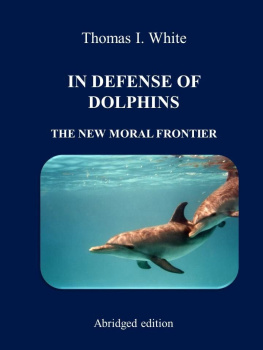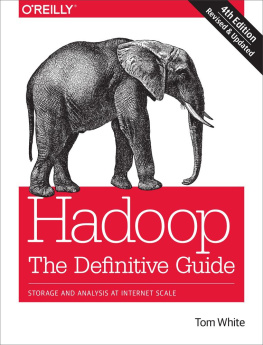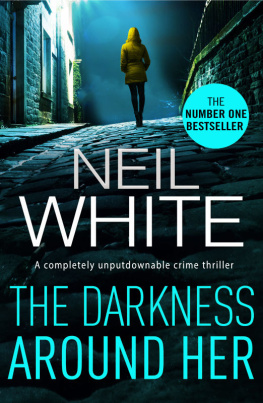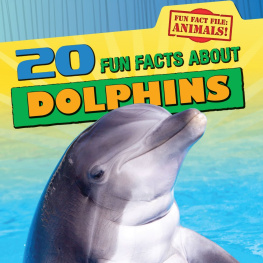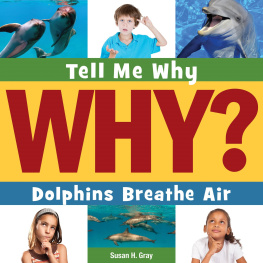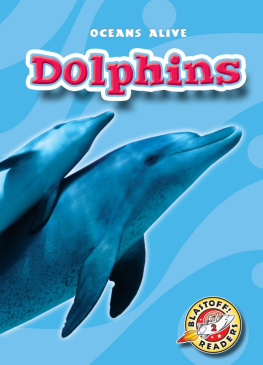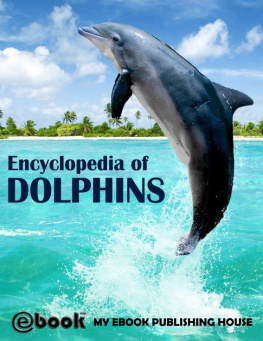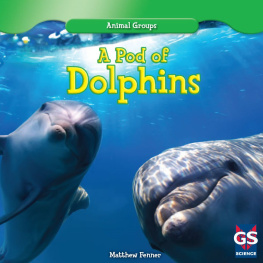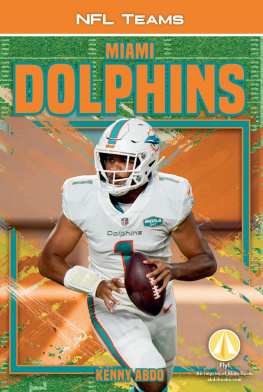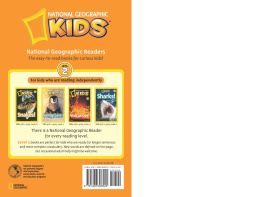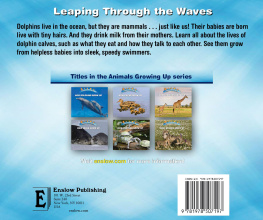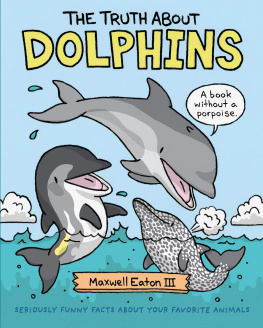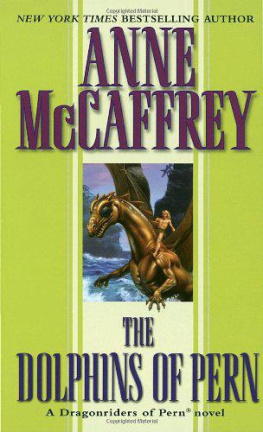White - In Defense of Dolphins
Here you can read online White - In Defense of Dolphins full text of the book (entire story) in english for free. Download pdf and epub, get meaning, cover and reviews about this ebook. year: 2011, genre: Romance novel. Description of the work, (preface) as well as reviews are available. Best literature library LitArk.com created for fans of good reading and offers a wide selection of genres:
Romance novel
Science fiction
Adventure
Detective
Science
History
Home and family
Prose
Art
Politics
Computer
Non-fiction
Religion
Business
Children
Humor
Choose a favorite category and find really read worthwhile books. Enjoy immersion in the world of imagination, feel the emotions of the characters or learn something new for yourself, make an fascinating discovery.
- Book:In Defense of Dolphins
- Author:
- Genre:
- Year:2011
- Rating:3 / 5
- Favourites:Add to favourites
- Your mark:
- 60
- 1
- 2
- 3
- 4
- 5
In Defense of Dolphins: summary, description and annotation
We offer to read an annotation, description, summary or preface (depends on what the author of the book "In Defense of Dolphins" wrote himself). If you haven't found the necessary information about the book — write in the comments, we will try to find it.
In Defense of Dolphins — read online for free the complete book (whole text) full work
Below is the text of the book, divided by pages. System saving the place of the last page read, allows you to conveniently read the book "In Defense of Dolphins" online for free, without having to search again every time where you left off. Put a bookmark, and you can go to the page where you finished reading at any time.
Font size:
Interval:
Bookmark:
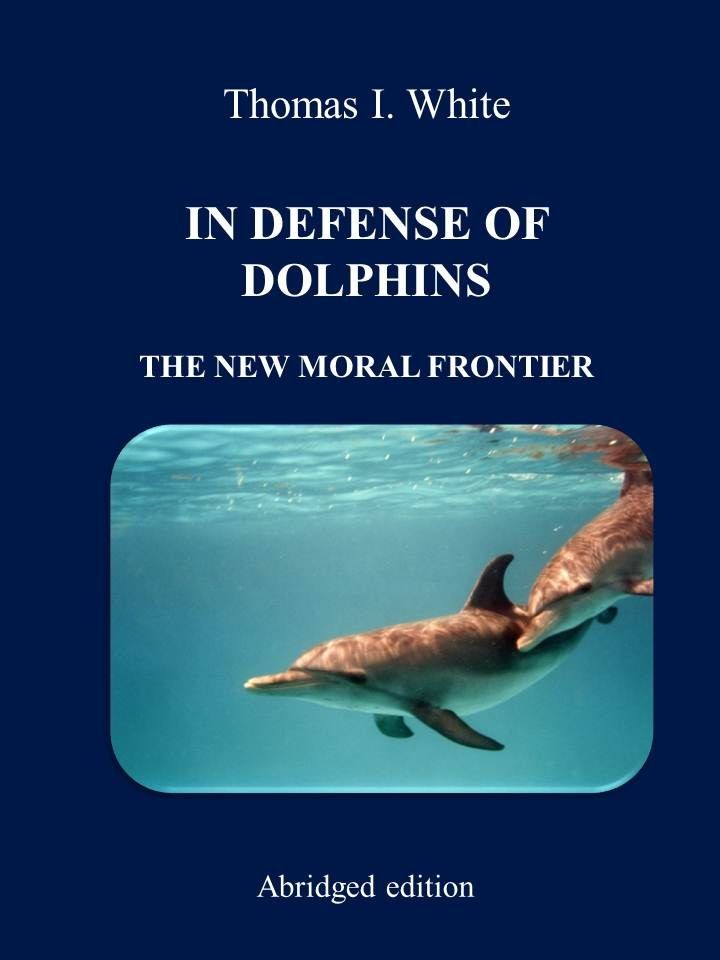

IN DEFENSE OF DOLPHINS: THE NEW MORAL FRONTIER (ABRIDGED EDITION)
By Thomas I. White
2011 by Thomas I. White
All rights reserved. The reproduction, transmission or utilization of this work in whole or in part in any form by any means, including xerography, photocopying and recording, or in any information storage or retrieval system, is forbidden without written permission. For permission please contact: twhite@indefenseofdolphins.com.
About the author:

Thomas I. White, Ph.D., is the Conrad N. Hilton Professor at Loyola Marymount University in Los Angeles, California. One of the founding signatories of the Declaration of Rights for Cetaceans: Whales and Dolphins, he is also a Scientific Advisor to the Wild Dolphin Project and a Fellow of the Oxford Centre of Animal Ethics. He served as U.S. Ambassador to the United Nations 2007/2008 Year of the Dolphin.
This booklet is a prcis of In Defense of Dolphins: The New Moral Frontier (Wiley-Blackwell, 2007) and aims to present in a concise format the central argument of the book. Like In Defense of Dolphins , this booklet begins by explaining the philosophical and ethical issues involved (Prologue and Section 1), surveys the main scientific research on dolphin intellectual and emotional abilities (Sections 2-5), argues that the evidence demonstrates that dolphins are nonhuman persons entitled to moral standing as individuals (Section 6), and concludes by arguing that the deaths, injuries and captivity of dolphins by humans is ethically indefensible (Section 7 and epilogue). Because this booklet is only about one-fifth the size of the book, most of the research referred to is only briefly summarized, and many important points of the book are left out altogether.
The most important exclusions are discussions about: the evolutionary history of cetaceans and some of the adaptations involved (Chapter 2); the human brain and some of the structural differences between the human and dolphin brains, for example, the presence of a paralimbic lobe in the dolphin brain as well as its cortical adjacency (Chapter 2); the ethical implications of the fact that a being possesses advanced consciousness (Chapter 3); dolphin signature whistles and self-awareness (Chapter 3); research using gazing at objects that demonstrates that dolphins recognize other minds (Chapter 3); the significance of a rich inner world for showing that dolphins have the power to make choices in their behavior (Chapter 3); certain important aspects of dolphin social life (division of labor, political alliances, aggression, acoustic and non-acoustic communication and sexual behavior) (Chapter 5); the risks of anthropocentrism in connection with the concept of personhood, with making language a central marker for intelligence and with overlooking the possibility of the co-evolution of the human hand and brain (Chapter 6); the possibility of a social self in dolphins (Chapter 6); and the idea that as long as there is evidence to support reasonable doubt about the ethical defensibility of certain practices, we have an ethical duty to refrain from doing them (Chapter 7).
Nonetheless, this booklet does represent the main lines of my argument that the scientific research on dolphins shows that dolphins are a who, not a what, and that it is therefore wrong to kill, injure or keep them in captivity.
The first day I saw humans and dolphins together remains one of the most unforgettable.
During my initial visit to the Dolphin Research Center, a facility in the Florida Keys, I was invited to watch an upcoming dolphin/human swim. Anxious to observe how the dolphins would interact with their human visitors, I watched as a family of three made its way to the dolphins dock. The parents entered first and then helped their young son into the water. The boy was clearly apprehensiveand he became even more nervous when a dolphin named Little Bit swam up and parked herself right beside him. Encouraged by the trainer to reach out and touch the dolphin, the boy responded. Unfortunately, he responded somewhat too enthusiastically. He reached out and slapped his hand directly onto Little Bits blowholethe opening on the top of a dolphins head through which these cetaceans breathe. Little Bit slowly backed up, allowing the boys hand to slide down her rostrum. And she remained near the boy, remarkably attentive throughout the remainder of the swim.
To the untrained eye, the encounter was simply interesting. It wasnt until I discussed it later with one of the DRC staff that I understood the full significance of what had happened.
Little Bit had a reputation for taking a special interest in children, but her behavior when the boy put his hand over her blowhole was most unusual. Ordinarily, one of the quickest ways to spook a dolphin is to move your hand towards the top of its head. Dolphins eyes have great mobility, but this is one of their few blind spots. And unlike humans, who can breathe through either our noses or mouths, dolphins have only one opening to their lungs. If you move your hand towards a dolphins blowhole, he or she will usually jerk its head away. But the boys hand didnt simply move out of Little Bits view towards a sensitive area, it fell squarely on top of her blowholethe equivalent of clamping your hand over a humans nose and mouth. The fact that Little Bit responded to this by slowly backing upand then staying patiently with the boy for the rest of the swimwas extraordinary.
However, I was then told about an even more remarkable encounterthis time involving a blind boy and a dolphin named Tursi.
Because the child was unable to see the dolphins in the pool, he was trying to orient on them by following the directions of his parents and the trainer in charge of the swim. But then Tursia dolphin who typically had no interest in swimmersswam up to the boy and whistled to let him know she was there. And she remained by him for the whole encounter, vocalizing the whole time.
Remarkably, Tursi had determined that the boy was sightless, and she adjusted her behavior appropriately. Dolphins generally recognize the difference between human adults and children, and they tend to be more patient and gentle with children. But the fact that Tursi also adapted her behavior to the boys sightlessness was quite impressive.
However, perhaps the most interesting fact is that Tursi herself was blind in one eye. Could this have had anything to do with the way she related to the boy?
*
These episodes with Little Bit and Tursi were a particularly good place for a philosopher like myself to begin my study of dolphins. The incidents were so rich that they are as engaging now as the day I saw the one and heard about the other. And they raise a number of important questions.
Why did Little Bit and Tursi behave as they did? Did Tursi really understand that the boy was blind? How would she have determined that? Why did she take so much interest in him? Is it possible that seeing a child with a disability that she shared prompted a compassionate and patient response? Humans have for centuries claimed that only our species has thoughts and emotions. Does it turn out that were wrong? Tursis brain is bigger than yours or mine. What went on inside it that led her to act the way she did with the boy? Did Tursis actions stem from thinking and feeling?
Font size:
Interval:
Bookmark:
Similar books «In Defense of Dolphins»
Look at similar books to In Defense of Dolphins. We have selected literature similar in name and meaning in the hope of providing readers with more options to find new, interesting, not yet read works.
Discussion, reviews of the book In Defense of Dolphins and just readers' own opinions. Leave your comments, write what you think about the work, its meaning or the main characters. Specify what exactly you liked and what you didn't like, and why you think so.

